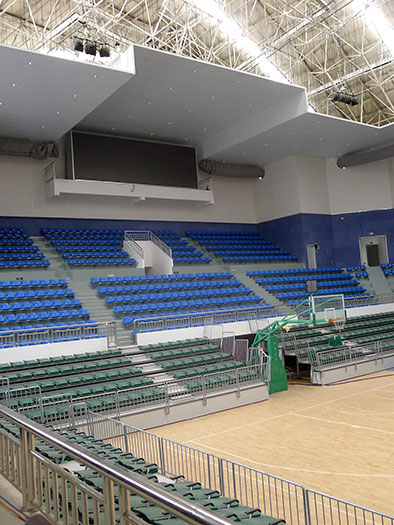Community R SERIES loudspeakers have been fitted in the new Mingshan Stadium in the Ya’an City of Sichuan, China, as part of one of the most significant construction projects to take place in the country following the devastating Lushan earthquake of 2013.
The instillation in the 2,500 capacity stadium was led by locally-based integrator Chengdu Eagle Huang Technology Company. The stadium will be home to a multitude of events including conferences, exhibitions, sports games and live entertainment.
Mr Lian, Technical Manager of EZPro, said: “It is a large stadium with a trapezoidal distributed audience area and long reverberation time. To reduce the detrimental effects of the room acoustics, the clients were advised to do some acoustic treatment during the construction stage. However, due to budget limitations they only managed to hang sound absorbers over part of the hall and provide a suspended ceiling over the seating area. The walls around the playing area were partially equipped with acoustic panel absorbers and reflections from the seating area are mainly absorbed by the audience.”
The system employs 26 R.5 loudspeakers, configured in seven groups. They are distributed on the ceiling truss and project towards the court and surrounding spectator stands. According to the specific coverage pattern required for each PA zone, the groups consist of a combination of R.5-94 and R.5-66 loudspeakers.
Mr Lian continued: “The venue still has a relatively long reverberation time, which made it essential to choose loudspeakers with great sensitivity and directivity. Also, as the loudspeakers are installed on the ceiling truss, they needed to be lightweight to ensure the installation is safe and reliable. To meet these requirements we chose Community R SERIES loudspeakers as the most effective solution. R SERIES produce high-fidelity sound with excellent sensitivity and directivity. They work well in distributed systems, projecting full-range sound for even coverage of the seating areas, especially the mid and low frequencies which are the most important for tonal balance and the most difficult to control.”





